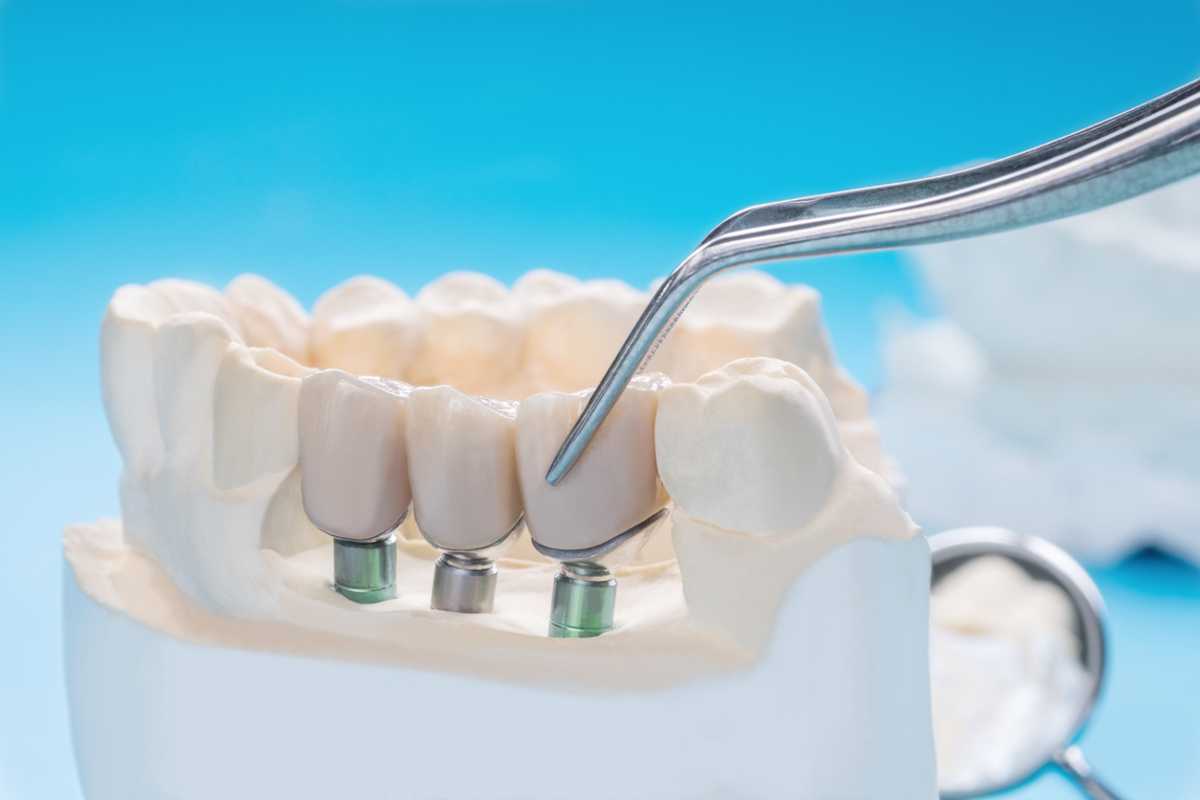Replacing missing teeth through the use of dental implants is a combination of two branches of dentistry.
First is the surgical phase, which deals with the placement of the implant inside the jaw bone. Once the dental implant has fused with the bone, it's time for the prosthetic phase. The prosthetic phase deals with the attachment of a crown on the implant. It is only after the prosthetic phase that the patient achieves full function and aesthetics of the missing tooth.

Types of dental crowns for implants
1. Cement-retained crowns
In these types of crowns, the prosthetic crown is attached to the abutment with the help of dental cement, much like the way normal crowns and bridges are cemented to the tooth.
Once the healing of the dental implant is complete, and it has fused to the bone, the surgeon puts a small incision on the gum over the implant, and screws in an attachment called an abutment. This abutment acts as a connecting structure, by which the prosthetic crown is attached to the implant. Once the abutment is secured, it acts similar to a tooth prepared to receive a crown. Dental cement is mixed and spread in the prosthetic crown, and the crown is then placed onto the abutment to cement it permanently to the abutment.
2. Screw-retained crowns
In these types of crowns, the prosthetic crown is attached directly to the implant with the help of a screw. This screw is secured through an access hole on the top of the crown.
Once the dentist has taken the measurements of your jaw, they send it to the dental laboratory to make a custom-made crown for you. This is then secured to the dental implant in your mouth with the help of a small screw.
Is a screw-retained crown better than a cement-retained one?
Both types of crowns have their own sets of advantages and disadvantages.
Esthetics
This problem can be avoided by ensuring the placement of the implant is made keeping the position of the final crown in mind. That is something that digital planning and guided implants help make very easy.
Strength
In cases where the size of the crown is relatively smaller, an access hole compromises the overall structural strength of the prosthesis. In such cases too, screw-retained crowns are avoided.
Retrieval
The main drawback of a cement-retained crown is that, once it is attached, it cannot be removed, even by the dentist, without destroying the prosthesis. Hence there is no way to retrieve the crown in case the underlying abutment comes loose or to remove the crown/bridge to clean it.
If the dentist wants to give a temporary crown or bridge to restore aesthetics until the gums heal sufficiently to receive a final prosthesis, the temporary crown/bridge has to be screw-retained, so that the dentist can easily remove it later.
Hygiene
It is impossible to clean the excess dental cement which is pushed into the gums around the implants while fixing a cement-retained crown. This makes it more susceptible to peri-implantitis (inflammation around the implants) than can compromise the long term survivability of the implant.
Cost and ease of fabrication
It is easier to fabricate a cement-retained prosthesis if the implant placement is not ideal. Screw retained crowns require a more precise position of the dental implant.
Fabrication of a screw-retained prosthesis requires additional components and skills. This may increase the overall cost of the prosthesis for a screw-retained crown.
Which materials are used to fabricate a dental crown?
- PFM stands for "porcelain fused to metal". As the name suggests, these types of crowns have a layer of porcelain which is attached to a metal substructure. These crowns are tooth-colored, but due to the underlying metal, they tend to have an opaque hue. The porcelain layer may chip off from the metal frame if there are heavy chewing forces or bruxism.
- Emax crowns are made from lithium disilicate. These are very strong and have the best aesthetic results of all currently available crown materials.
- Zirconia crowns are fabricated from a naturally-occurring ceramic known as zirconium. It has excellent toughness and a good visual appeal to match the natural tooth color.


Your thoughts on this